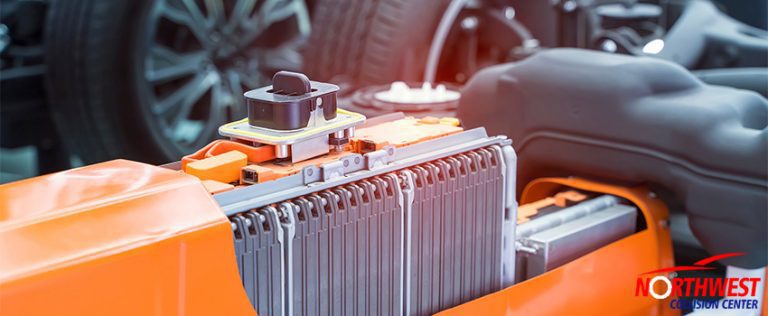With our interest and curiosity about how electric vehicles work to provide a safer and more environmentally friendly mode of transportation, comes the question of how electric car batteries are made.
In order to fully understand how electric car batteries are manufactured, you must understand the technology and what electric car batteries are made of. To make it simple, the batteries used for electric vehicles are lithium-ion batteries, the most common battery type used for electric appliances and technologies. Lithium-ion batteries are made up of certain elements, namely: carbon, metal oxide, and lithium salt, all of which consist of positive and negative electrodes that produce electric current to make the battery work.
One of the reasons electric vehicles are made is to help protect the environment. The best thing about electric car batteries is that 80% of the components are recyclable, which means that the EV battery raw materials can be stripped down after the battery has drained its lifecycle and be reused. EV batteries are packed with recyclable materials, which is one reason electric cars are more expensive than gas-powered cars.
What are Electric Car Batteries Made Of?
Like mentioned earlier, electric car batteries are lithium-ion, but that is not the only material used to produce EV car batteries. Here are all the materials used to make electric car batteries.
1. Lithium
This material is used in all electric vehicle batteries that are being made today. Lithium is a valuable resource that is found and mined in Australia and other places. It has a low melting point but a high heat capacity. Lithium is found at the anode, or negatively-charged pole of the battery.
2. Graphite
The second most commonly used component in batteries is graphite. This is also part of the anode in batteries. Graphite is used in EV batteries because it allows the full power of the battery to be used until it is discharged.
3. Cobalt
Cobalt is an essential material in producing electric vehicle batteries because it has a lot of different uses. While it is considered to be mainly produced in copper and nickel mining operations, it can also be mined in the Democratic Republic of Congo. It is also commonly combined with nickel to form the cathode, or positively-charged pole of batteries.
4. Nickel
This mineral can be found and mined in many places worldwide and is commonly used in batteries. It makes up the majority of the electric car battery’s cathode. Nickel also aids in extending the range of the cathode because of its high energy density.
5. Manganese
Manganese can be used as a substitute for cobalt in the production of electric vehicle batteries. It is the fourth most commonly used metal in battery production and is also more affordable than cobalt, making it a good alternative to produce low cost electric vehicle batteries.
How are Electric Car Batteries Made?
The method of manufacturing electric car batteries is simple. Most manufacturers follow the same structure: battery cells, battery modules, and battery packs. Battery cells are linked in order to create a battery module. This will combine the capacity of all the cells, allowing them to act as a single unit.
Based on how many cells make up a module, it can generate capacity from 2 to 10 kWh. Manufacturers use different numbers of cells per module, indicating different capacity levels for the batteries they produce.
In order to create a battery pack for the electric vehicle, battery modules are then used in series. With more than one battery module, battery packs can now generate from 40 to 100 kWh for the motor.
Electric Car Battery Life
Electric vehicle batteries can be used for different purposes because the materials are still useful after the EV battery dies or loses its capacity to provide enough power for the vehicle. It can be used to power a home or even a whole building through a battery storage system. Battery energy storage systems can store energy from used up batteries and use it as a power source later.
If your home is powered by wind or solar energy, you can partner it with an electric car battery. Use it at night when wind and sunlight are at the minimum to maintain your electricity at home. This will help you save money on electric bills and reduce the energy you use from the grid.
Not only are electric car batteries safe both for the environment and for the people who use them, they are also made with recyclable materials that can still be useful even after the electric battery itself has died.
To make sure that your electric vehicle and its battery are maintained in great shape, Northwest Collision Center, one of the best auto body repair shops in St Petersburg, FL, offers repair, repainting, installation, replacement, and other auto services for your electric vehicle. Visit our website and contact us now!










